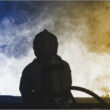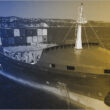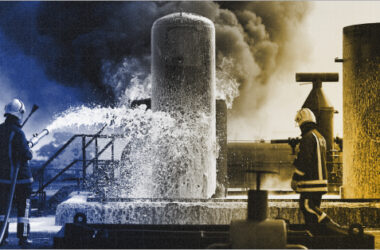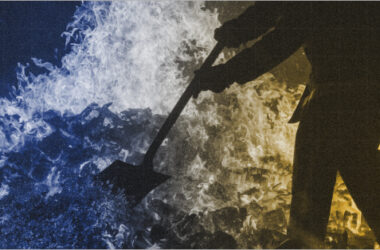In a world full of uncertainties, insurance acts as a financial safety net, providing security and peace of mind in the wake of unforeseen disasters. Among the variety of insurance policies available, Fire Insurance is an important safeguard against the destructive force of fire and allied perils. However, like with any insurance policy, it is critical to read the minute details in print and fully comprehend each aspect of your policy.
The “Dynamo Clause,” a fascinating but generally neglected component of Fire Insurance, may significantly impact the scope of your coverage. In this piece of writing, we plunge into the world of Fire Insurance to discover what risks are not covered by the policy and to decipher the Dynamo Clause.
Exclusions Under Fire Insurance Policy
The Perils not covered by a typical Fire Insurance Policy are mentioned below:
- Spontaneous combustion
This policy often excludes coverage for spontaneous combustion, which is a fire that ignites without an external heat source or ignition. It also excludes incidents where heat-generating materials or substances, like oily rags, chemicals, or certain agricultural products, catch fire without an external ignition source. The policy may list specific materials or substances that are prone to spontaneous combustion, and damages resulting from these materials will not be covered.
- Acts of government or public authority
Damage caused by actions taken by Government authorities, such as demolishing or burning a building for public safety reasons or permanent or temporary dispossession by order of the Government may not be covered under a standard Fire Insurance Policy.
- Property undergoing any heating or drying process
This exclusion is included to limit the insurer’s liability in situations where the risk of fire is higher due to heating or drying processes. This could encompass activities like drying grains, textiles, or other materials, as well as heating processes used in various industries. The policy may specify the types of property that fall under this exclusion. For instance, it could include machinery, equipment, or materials involved in heating or drying processes.
- The explosion of boilers (other than domestic boilers)
The policy may provide a definition of what constitutes a boiler. This definition typically includes industrial and commercial boilers used in manufacturing, power generation, or other non-domestic applications. Domestic boilers, such as those used for heating homes, are usually not subject to this exclusion. The exclusion typically pertains to the boiler itself and any property directly damaged by the explosion, such as surrounding machinery or equipment. It may also extend to any consequential damage caused by the explosion.
- Total or partial cessation of work
The policy often excludes coverage for the total or partial cessation of work, also known as business interruption or loss of profits due to a fire-related incident. The exclusion typically applies to the financial consequences of a business not being able to operate or generate income due to damage from a fire or other covered perils. It may include loss of profits, extra expenses incurred to maintain operations and other similar financial losses. Policyholders can purchase separate policies to cover the financial losses resulting from such business interruptions.
- Normal cracking, settlement or bedding down of new structures
This exclusion generally applies to new structures or recently constructed buildings. It says the policy does not cover damage related to common, non-fire-related issues such as normal cracking, settlement, or bedding down of new structures. Typically, these are minor and expected structural changes that occur as a building settles into its foundation or as construction materials naturally expand and contract. It acknowledges that some degree of settling and minor cracking is a normal part of the construction process and should not be attributed to fire damage.
- War or warlike operations, Nuclear perils
Damage caused by war, acts of terrorism, or nuclear events is often excluded from standard Fire Insurance Policies. These are considered high-risk and are typically covered by specialized policies.
- Pollution or contamination
The exclusion generally applies to losses or damages arising from pollution, contamination, or environmental hazards, regardless of whether they result from a fire or another cause. This is because Fire Insurance is primarily designed to cover physical damage caused by fires and related perils, rather than environmental or pollution-related liabilities. To protect against pollution or contamination-related risks and liabilities, businesses and property owners may need to purchase separate insurance policies or add-on covers, if available.
- Overrunning, excessive pressure, short-circuiting etc
This policy excludes coverage for damages related to specific electrical and mechanical issues, such as overrunning, excessive pressure, and short-circuiting. To protect against losses caused by electrical or mechanical breakdowns, businesses may need to purchase additional coverage, known as machinery breakdown insurance.
- Wear and tear, gradual damage, and maintenance issues
Fire Insurance generally does not cover damage caused by normal wear and tear, gradual deterioration, or lack of maintenance. It’s the policyholder’s responsibility to maintain the property to prevent such damage.
· Negligence
If the fire damage occurs as a result of the policyholder’s negligence, such as failure to properly maintain fire safety equipment or leaving a fire unattended, the insurance company may deny the claim.
Perils that may be covered by Fire Insurance as an add-on:
- Earthquake
- Terrorism
- Burglary, Housebreaking, theft, etc.
Policyholders will need to pay additional premiums if they need these add-on covers.
What is the Dynamo Clause?
Some insurance policies have a clause that states that damages to electrical appliances caused by an incorrect or artificial electrical current are covered only if the current creates a fire. The clause even stipulates that the policy only covers fire damage and not repairs to electrical appliances or anything else.
In some other policies, a dynamo clause is another name for an electrical exemption clause. Here, a dynamo clause is a provision that excludes coverage for loss or damage to electrical appliances, apparatus, fixtures or fittings caused by electrical currents, whether artificial or natural. This means that if a fire is caused by a short circuit or other electrical malfunction, the insurance company will not pay for the damage to the electrical equipment that caused the fire. The dynamo clause is intended to protect insurance companies from having to pay for claims that are caused by the inherent risks of electrical equipment. Electrical equipment is prone to malfunctions, and these malfunctions can easily lead to fires. By excluding coverage for loss or damage caused by electrical currents, insurance companies can reduce their risk of having to pay for these claims.
There are a few exceptions to the dynamo clause. For example, the clause may not apply if the electrical equipment is specifically mentioned in the policy or if the damage is caused by lightning. In addition, some insurance companies may offer an endorsement to the policy that will provide coverage for loss or damage caused by electrical currents.
Conclusion:
In the world of insurance, knowledge is power, and being well-informed about the coverage you hold is a vital step towards securing your financial future. In the discussion above, we tried to explore the intricacies of Fire Insurance and the enigmatic Dynamo Clause. From the discussion, it becomes abundantly clear that these policies are more nuanced than they may initially seem.
Understanding the risks not covered under a Fire Insurance Policy is crucial, as it empowers policyholders to take proactive measures to mitigate those risks or seek additional coverage where needed. Moreover, grasping the implications of the Dynamo Clause ensures that policyholders are aware of potential limitations and can make informed decisions when it comes to safeguarding their property. In the face of an unforeseen fire-related disaster, knowing precisely what your insurance covers can mean the difference between a seamless recovery and a financial setback. We hope this article has provided you with valuable insights into these aspects of Fire Insurance, helping you better protect what matters most.
Frequently Asked Questions (FAQs)
1. What is the principle of proximate cause in Fire Insurance?
In Fire Insurance, the principle of “proximate cause” is a crucial concept that helps evaluate whether a loss or damage is covered by the insurance policy. It entails determining whether the primary or most immediate cause of an occurrence or loss falls within the scope of coverage. It helps determine how the loss or damage occurred and whether or not it was caused by an insured peril.
Certain risks are clearly mentioned (known as insured perils) in a Fire Insurance Policy, while others are excluded (known as an exclusion). This means that some risks are covered while others are not. It is not always evident whether a single insured or uninsured peril caused the loss. The issue becomes more complicated when an insured peril is followed by an uninsured peril, an insured peril follows an uninsured peril, or both occur concurrently. The proximate principle facilitates the resolution of such situations by allowing the insurer to determine whether or not a claim is payable and, if so, to what extent.
2. What is a replacement policy in Fire Insurance?
In a replacement policy, the insurance providers guarantee reimbursement for loss depending on the market value of the property. Therefore, the amount to be reimbursed is calculated after considering the depreciation on the property. The policy guarantees that payment will be based on the cost of replacement. As a result, the cost of the new asset will be the same as that of the old. It is replaced at no additional expense because the compensation is determined based on the market value of the new assets.
3. What is covered in a Standard Fire and Allied Perils Policy?
A Standard Fire and Allied Perils Policy or SFSP typically covers the following risks:
· Fire
· Lightning
· Damage to aircraft
· Implosion/Explosion
· Strike, riot, and malicious damage
· Storms, tempests, typhoons, tornadoes, floods
· Cyclones, hurricanes and inundations
· Impact damage
· Landslide and subsidence
· Tanks, apparatus, and pipes burst or overflow.
· Testing operation of missiles
· Automatic Sprinkler Installation leakage
· Bushfires
Additional covers can be appended to the SFSP policy by means of endorsement and by paying additional premiums.
4. Who Needs STFI Coverage in Fire Insurance?
STFI stands for “Storm, Tempest, Flood, and Inundation.” Owners and operators of commercial properties, offices, factories, or warehouses may require the STFI add-on coverage as part of their Fire Insurance. This coverage protects their assets and operations from potential storm, tempest, flood, or inundation damage. So, any business that requires protection from natural disasters should include STFI coverage as part of its basic SFSP policy.
Developers and builders working on building projects may also want STFI coverage to protect their properties while they are being built. It protects against probable storm, tempest, flood, or inundation damage during the construction period. For the same reason, public institutions including schools, hospitals, government offices, and non-profit organizations may choose to include STFI coverage in their Fire Insurance arrangements.








